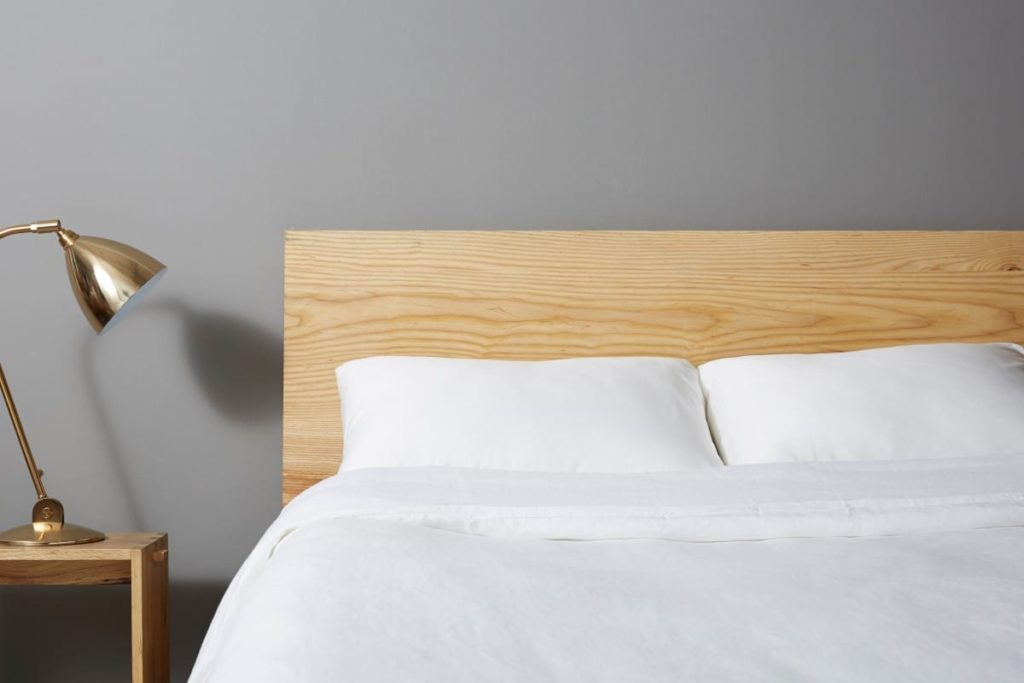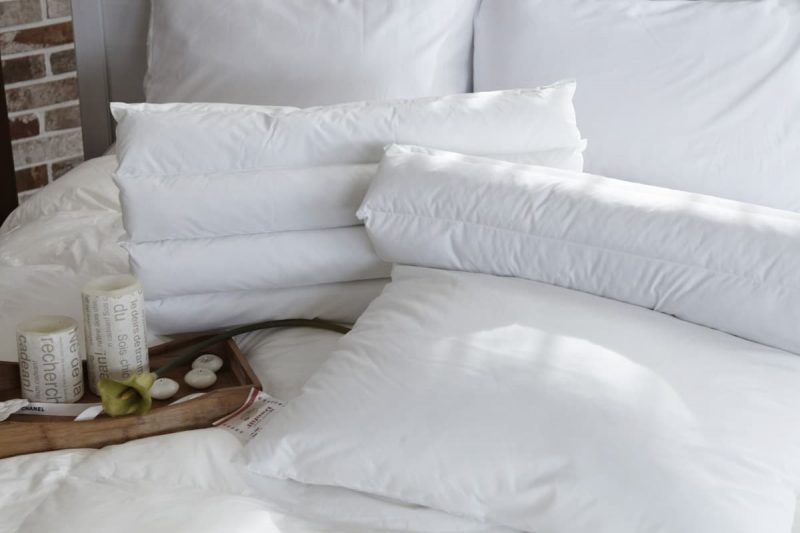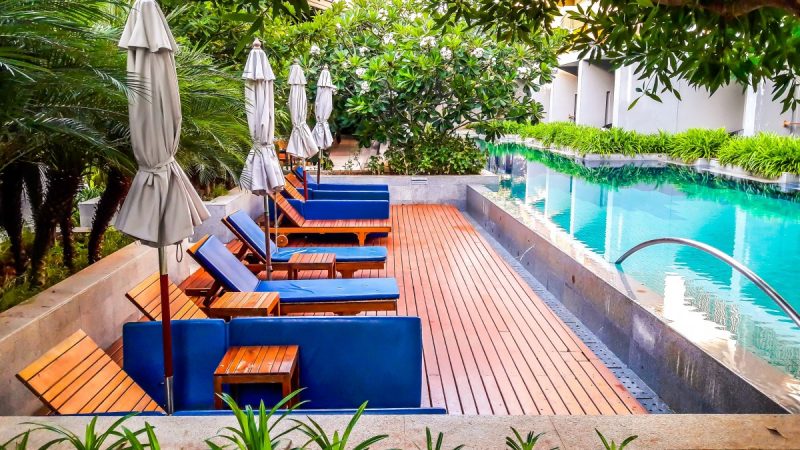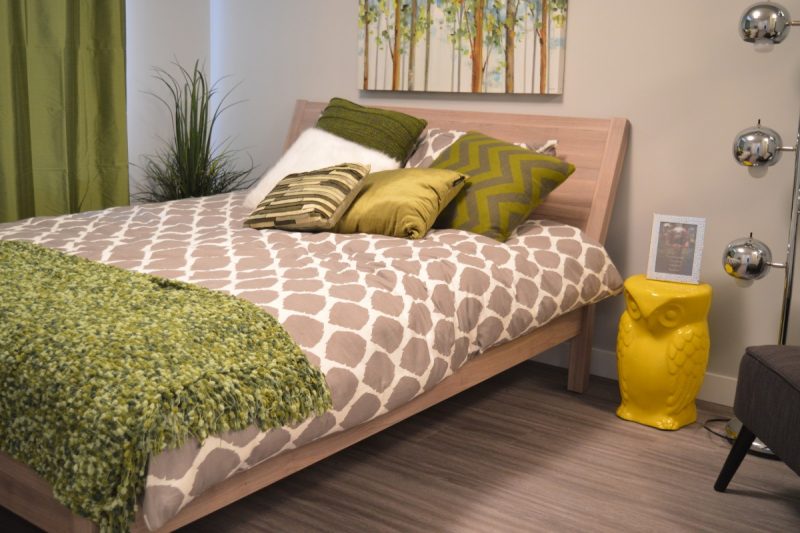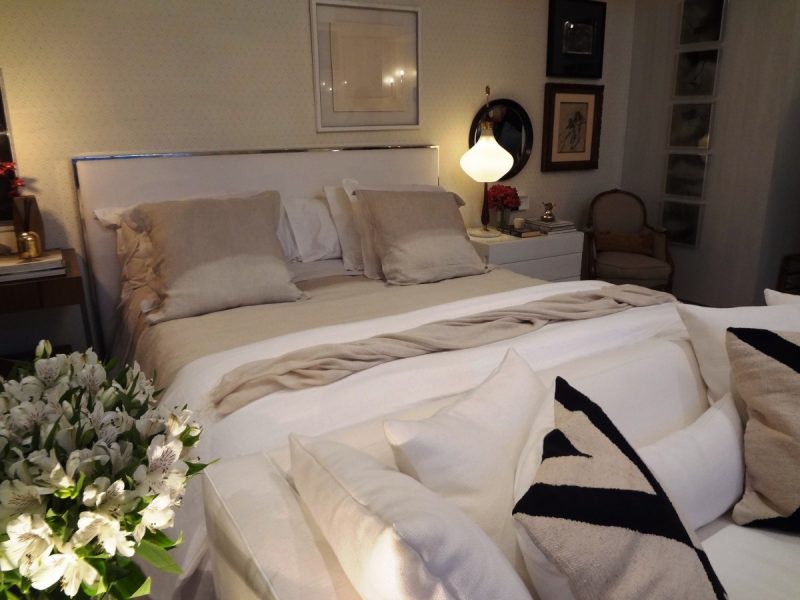If there’s one thing you need to know about commercial landscaping, it’s the fact that it’s entirely dependent upon the project’s long-lasting beautification and timely completion. Anyone in the UK who’s taking on a project of this nature will feel overwhelmed each time they try to figure out how to start landscaping from scratch. While some people might choose to leave the execution to the professionals, others prefer to roll up their sleeves, get their hands dirty, and handle the project independently.
It doesn’t matter if you’re trying to maintain your landscape’s existing details or completely revamp your commercial property’s current landscape – you’ll need to understand that your landscaping design can directly impact your organisation’s bottom line.
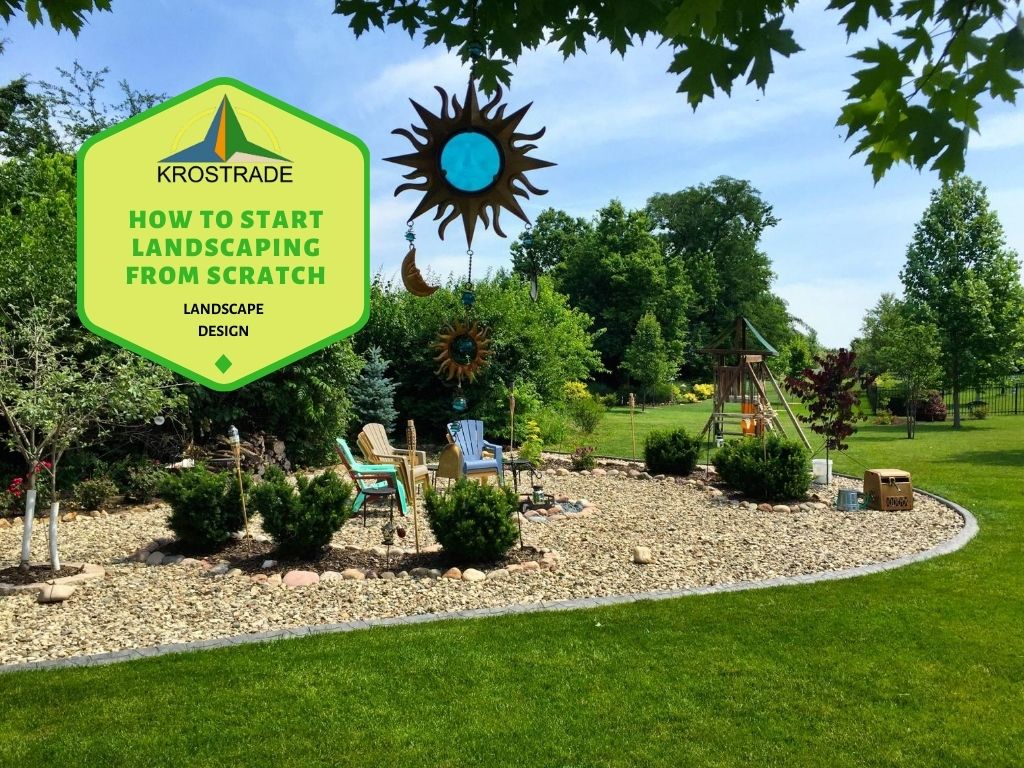
What is Landscaping?
Before anything else, let’s establish landscaping as an activity that seeks to modify a specific area or property’s visible features. Landscaping is essentially a combination of art and science with the ultimate goal of creating a functional yet aesthetically pleasing extension of indoor settings to the outdoors.
The distinct purpose of landscape design is to strike a beautiful balance between a house or a building and its natural surroundings. To develop the landscape design of your choice, you’ll need to have a working knowledge of the various elements of art and design principles.
What are the Various Elements of Art?
Landscaping design considers the various art elements that include colour, line, form, scale, and texture. Each piece is closely connected; that’s why it’s imperative to know their distinct natures and characteristics before considering their interactions. Let’s take a closer look at each one of them.
Colour
The best way to understand and effectively use this element of art is to look at a colour wheel. You’ll notice that there are only three primary colours – red, blue, and yellow.
The secondary colours, which include orange, green, and violet, are known as the secondary colours since they combine two primary colours. For example, to produce orange, you’ll need to combine yellow and red. Moreover, tertiary colours are simply the combination of one primary and one secondary colour.
When you’re talking about tint, you’re referring to the colour’s fair value only achieved when white added to a pure colour found on the colour wheel. On the other hand, shade is a term used to refer to the colour’s dark value and is only created when black added to any pure colour on the colour wheel.
Moreover, black, white, and grey classified as neutral colours that you can safely use together with any colour. If you want to attract more attention, it’s best to use light shades and tints and vivid and bright colours.
When it comes to practical applications, you’ll need to learn how to combine specific colours into colour schemes that may be monochromatic, analogous, or complementary.
-
Monochromatic colour scheme
If you want to have a colour scheme comprising different tints and shades of the same colour, you’d wish to a monochromatic colour scheme. However, it’s important to note that this type of colour scheme is challenging to achieve in its purest form when you’re trying to apply it to your landscape design. To give you an idea about what a monochromatic landscape design might look like, try to imagine white and pink flowers against a background of a building made of dark pink and red bricks.
-
Analogous colour scheme
On the other hand, an analogous colour scheme would include a combination of adjacent colours on the colour wheel. An example of this is a colour scheme with green, green-blue, blue-green, blue, and violet-blue. You can successfully achieve this kind of colour scheme if you vary the colour of your foliage from green to blue-green or use pyracantha with orange-red berries and position them against your red brick building.
-
Complementary colour scheme
Lastly, a complementary colour scheme is made up of colours across each other on the colour wheel. An example of this colour scheme would be a combination of red and green. You can effectively translate this colour scheme into your landscape design using your greenery against a red brick building.
You must also carefully consider the changing seasons throughout the year when developing your landscape plan because your landscape’s colour schemes may also change together with the seasons. For instance, a monochromatic colour scheme may be produced when your white and pink azalea flowers when they’re against a red brick building. During the summer, the green azalea leaves would create a complementary colour scheme when they’re against the red brick, and your pyracantha berries could generate an analogous colour scheme in the autumn.
If you’re not aware, you can also use colours to change your perspective of distance visually. When you create a gradient using warm colours and lighter tints such as red, orange, yellow, and white may cause an area or an object to advance toward an observer. To give you a better idea, you can make your building appear closer to the street if you add these colours and tints into your landscape and place them near your building’s foundation.
On the other hand, if you want to make your building look like it’s far from the street, all you have to do is incorporate cool colours and deep shades that include green, blue, and black. Keep in mind that while cool colours exude a sense of calmness and restfulness, warmer colours express action. If you plan on using warm colours, it’s best to use them against a dark background or unfiltered light.
Line
The purpose of your landscape design and its existing patterns are the basis of the concept and creation of the line. In case you’re wondering, the track is directly related to the flow of your design and the observer’s eye movement when we’re talking about the overall landscape, the flower bed arrangement.
It’s also essential how these beds flow and fit together marks the conclusion of the line.
Furthermore, the changes in your plant height and the height of your shrub canopies and trees can directly affect the creation of your vertical line. Curved lines, also called free-flowing lines, can be described as graceful, gentle, and smooth. They’re used for landscape designs that aim to project a more relaxing, moving, and progressive environment.
On the other hand, straight lines can appear more structural, stable, and a little forceful as they direct the observer’s eye to a specific point more quickly than curved lines.
Form
It’s important to note that form is closely related to the line. As an art element, the style is more encompassing, while the front is usually associated with the edge of the outlines of specific objects. Moreover, the form is also strongly related to the size of a particular area or an object.
Since the form is all about the structure and shape of a plant or a group of plants, you’ll need to consider this element when considering planting arrangements in your landscape and their growth habits. Some examples of plant forms include oval, upright, columnar, weeping, spreading, and broad spreading.
Texture
A particular object’s surface quality, which can either be seen or felt, is called its texture. When it comes to landscape design, the surfaces you see in it include the buildings, patios, walks, groundcover, and plants. Texture can be classified as coarse, medium, fine, smooth, rough, glossy, or dull.
Scale
The last element of art is called scale. It merely refers to the size of a specific object or group of things concerning its surroundings. At the same time, size talks about the exact measurements of an object, scale discussions about the relationship between the objects’ size when they’re adjacent to each other. When you’re trying to develop your landscape design, you must consider the size of your buildings and plantings in relation to the human scale.
What are the 7 Principles of Landscape Design?
Knowing how to manipulate the elements of art will help you adjust the design principles that include unity, balance, proportion, transition, focalisation, rhythm, and repetition. These principles must effectively interact with each other to flawlessly execute your intended landscape design.
Unity
To achieve a unified design, you must know how to effectively use each of your design’s components to demonstrate the main idea via a consistent style. Each unit in your landscape must exhibit consistency of character to emphasise unity, as well as harmony. In other words, each part of your design must fit well together.
One way to effectively address the unity of your design is to make use of mass planting and the concept of repetition. In a unified design, each activity area can seamlessly blend with the entire landscape. However, you must also realise the importance of putting functionality into consideration when you’re selecting the components that complement your central scheme.
Balance
In essence, balance speaks of the sense of equality between each element of a landscape composition. Balance can be classified into two types – symmetrical and asymmetrical.
Symmetrical balance is achieved when both sides of your landscape design are identical to each other – from their lines, forms, textures, and colours. Furthermore, there has to be a distinct dividing line between these two sides.
On the other hand, when both sides of our landscape design exhibit lines, forms, textures, and colours different from each other, the balance is asymmetrical. In this type of balance, the opposing compositions are used to create equal visual attraction. For instance, you may use mass to oppose colour and linear dimensions to oppose height.
The creation of asymmetrical balance requires more skilful manipulation of several design elements than the nature of symmetrical balance.
Proportion
The principle of proportion talks about the size of the design’s components concerning each other and the overall design. You’ll need to make sure that the dimensions of your trees and shrubs complement the sizes of the other elements surrounding them. For example, it would be best if you planted a towering oak tree next to a multistoried building rather than planting it next to a single-story facility.
Transition
Transition means a gradual change that can be achieved by arranging various objects with different textures, forms, and sizes in sequential and logical order. When it comes to illustrating colour transitions, you use the radial sequence on the colour wheel as you would with a monochromatic colour scheme. Other examples would include structural forms that start from round to oval to linear and textures that create from coarse to fine.
The possibilities for creating transition are endless when you figure out how to use various elements of different sizes, forms, textures, and colours. While you’re at it, keep in mind that the principle of transition isn’t limited to a flat or facial view. It also refers to the landscape composition’s 3-dimensional perspective.
If you’re not aware, you can also use the transition principle to extend your design’s visual dimensions beyond their essential aspects. For instance, you can make use of radical lines in your landscape’s private area to draw the observer’s attention to a lake scene. This can be executed appropriately when using the transition of textural changes from coarse to delicate foliage along focal lines produced by the transformation of taller to shorter plants.
Focalisation
You use focalisation to visually lead the observer toward a specific feature in your design without conscious effort.
This focal point is placed at the vanishing point between some radial or approaching lines in most cases. If you want to create a strong focalisation point, it’s best to use straight radial lines rather than curved ones. You can also use the principle of focalisation to direct traffic in a specific area.
Rhythm
This design principle is effectively achieved when the elements of the composition positioned in a way that creates a feeling of motion. Rhythm also helps you steer clear of confusion in your overall landscape design. Proper use of colour schemes can help you produce a sense of rhythm and the repetition of line and form.
Repetition
This design principle involves the repeated use of certain features that include plants with similar shapes, lines, forms, textures, and colours. The use of repetition must be carefully planned because too much can produce a monotonous effect. However, if you use it effectively, you can successfully execute focalisation, rhythm, and unity in your composition.
Tips for Adding Benches to Your Commercial Landscape Design
Did you know that benches are considered the unsung heroes of any build environment? Aside from the fact that they’re lovely to look at, they also do their job well, and they usually positioned in a manner that allows them to stay out of your way. As we all know, benches created to promote relaxation.
However, these outdoor furniture pieces can also be used to give more definition to your landscape design and direct pedestrian circulation. For this reason, instead of randomly choosing and positioning these pieces, a lot of careful thought must go into which parts to pick and where they should eventually end up. If you’ve been planning to incorporate benches into your landscape design, it’s best to include this during the early part of your design process if you don’t want them to appear like they’re mere add-ons. To get you started, check out these tips to help you execute proper bench placement in your landscape design:
Make sure that there’s a view.
The view doesn’t have to be breathtakingly spectacular. Although you don’t need a picture of the snow-capped mountains while you’re sitting on your bench, it would be nice if you could gaze upon a patch of flowers in full bloom, a pond, or a charming vignette.
Check the location in the morning, the afternoon, and the evening.
Unless you pick the right spot for a bench, the user won’t get enjoyment out of it. Before you choose a spot where you would install your bench, try walking around the area and set up a folding chair in a location with a decent view. Do this in the morning, the afternoon, and evening to check how the sun’s placement affects your bench and the shade.
If it gets too hot and sunny in the area, you might want to add a bit more shade to turn your bench into a welcome respite. On the other hand, if it usually rains in your area, you might want to place your bench under a tree canopy or a roof in case of an unexpected storm or sprinkle.
Mind the materials and style
Although you don’t have to choose perfectly coordinated benches, you have to make sure that their style and the materials used to create it will perfectly complement your building’s architectural design. For example, a sleek and geometric bench design would look great if your building is modern-looking. However, if your building’s architectural design is Victorian, you might want to consider using cast iron benches that are highly ornamental.
In choosing the material for your benches, you must consider the overall design of your landscape. For example, if your landscape design is formal, you might want to consider choosing benches made of metal. Besides the fact that they’re proven to last for a long time, they’re straightforward to maintain.
Once you’ve carefully considered the material for your benches, you’ll need to think about each piece’s design. For example, you need to figure out if you want a bench that has a sturdy back or a bench with no back. Another thing that you’d like to consider is the number of people each bench can easily seat.
Check the ground or surface material
You have to take a look at what’s underfoot before installing your bench. The surface material or ground can largely influence the bench that you can place on top of it.
If the ground isn’t level, you might want to level it out by putting down some pavers – unless you want your bench to appear as it set in the middle of the greenery. If flagstone pavers make up an uneven and rough surface, you shouldn’t place metal benches on top of it unless you’d want to sit on something unstable and rocky.
Factors to Consider When You Add Bicycle Parking to Your Commercial Landscape Design
As more and more individuals and organisations prioritise sustainable growth and development, alternative modes of transportation such as bikes are becoming more popular than ever. Environmentally-conscious people who want to reduce their carbon footprint while maintaining healthy and active lifestyle choices choose to ditch their cars and use bikes.
For this reason, you might be thinking about incorporating bicycle parking areas into your landscape design. Although you can always come up with various design strategies that can help you implement plentiful bicycle parking, consider these three primary factors while you’re at it:
Safety and security
Safety and security should always be your priority when you’re trying to incorporate bicycle parking into your landscape design. For instance, you have to check if the bike racks or lockers are made from top-quality materials and if these firmly installed on the area’s ground or floor. Furthermore, it would be great if your facility’s bicycle parking areas are situated in well-lit locations that the security personnel can easily monitor.
Furthermore, be sure to place short-term bicycle parking in busy public areas to increase visibility and informal surveillance. On the other hand, long-term bicycle parking should be situated in separate areas that are access-controlled.
You must also use personal protective equipment to protect your hands, eyes, and other parts of your body.
Accessibility
When you make accessibility a priority, you need to make sure that your bicycle parking area situated near your building’s entrances. When it’s impossible to keep these parking areas at ground level, you have to make them accessible from ground level via elevators and ramps. Furthermore, it’s best to keep certain obstacles such as steep slopes or a flight of stairs away from your bike rack area.
If you can, try to create a separate and dedicated area for bicycle ramps into their parking areas. Don’t forget to place way-finding signage to keep people guided.
Convenience
Lastly, you must consider the user’s convenience before installing your bike racks in specific locations around your property. It’s essential to make sure that the bicycle parking areas are accessible and easy to locate so that the users won’t have a hard time looking for them. Next, keep in mind that these parking areas should be kept close to bicycle-friendly routes so that they can be easy to use.
Tips for Designing a Short-Term Bicycle Parking
These short-term bicycle parking areas are also referred to as “visitor” bike parking, which only used for a few minutes to a few hours. For this reason, it’s best to keep these parking areas accessible to the users, with racks that can provide them with a secure point for locking their bikes up. Also, it’s best to ensure that these parking areas are covered to keep the bikes protected from natural elements.
Choose the rack design
If you’re not aware, you can find various bicycle parking rack designs that would suit your bicycle parking needs. The only way for you to determine the suitability and quality of these bike racks is to learn more about the key features of each of your design options.
Choose the right kind of materials
As you consider your bike rack design options, you’ll need to pay close attention to the materials used to build it. The best ones are usually made of industrial-grade materials, as well as galvanised steel. The worst ones are those made of wood, soft or untreated metals prone to rust, and those brittle cast composites that are likely to crack under impact.
If the rack design you have in mind comes with welded sections, be sure to steer clear materials that include stainless steel because this doesn’t mean weld strongly. In other words, their welded sections are weak, and thieves can easily break them.
When it comes to finishing, be sure that your bike racks have a smooth outer surface so that they won’t scratch or cause any damage to the bicycle frames.
Take note of good design features
If you want rack designs that feature excellent quality, be sure that they can provide two points of contact between your bicycle and your rack. This will allow your bike’s frame and one of its wheels to be securely locked to your rack while ensuring adequate support.
Furthermore, you also need to take space efficiency into account. Racks with good design features can accommodate many bicycles within a small area without compromising the space between the bikes that allow the users to facilitate locking and good parking.
Lastly, make sure that the design ensures detectability for users who are partially sighted or blind. It’s best to install a tapping rail to span an inverted U-style rack’s bottom part so that visually impaired people can easily detect it.
Tips for Installing Dog Stations to Your Commercial Landscape Design
Since landscaping with dogs in mind can be extra challenging, you’ll need to apply these must-have tips to incorporate dog stations into your commercial landscape design effectively.
Give hardscaping a try
During the planning stage of your commercial landscaping project, consider incorporating hardscaping into your outdoor space. In case you’re wondering, hardscaping pertains to anything that’s not soft in your landscaping design, such as bricks, stones, concrete, tile, and pebbles. Unlike soft areas such as manicured shrubs, turfgrass, and flower beds, hardscaping isn’t vulnerable to Fido’s digging, trampling, and staining.
A pet-friendly landscape design features a delicate balance between soft-scape and hardscape features. It can be easier for dogs to navigate your outdoor area without damaging your design elements with hardscaping.
Designate specific dog areas and create boundaries around it
You can easily designate specific dog areas in your outdoor space if you break the entire area into sections using some pavers. Be sure that the dog stations have clear walkways, as well as lounging spots for pets.
To create natural boundaries, you may want to grow thick and tall plants around the dog stations. Another option is to build fences around dog stations. You can find a variety of options for fencing, including lattice-topped horizontal boards or cottage-inspired pickets.
Tips for Choosing Trash Bins that Complement Your Commercial Landscape Design
Did you know that successful recycling is based on two concepts? These include getting people to put the right kind of stuff into the right bin and getting those trash items picked up and transported to the appropriate facility with great ease and efficiency. Although this may sound simple to you, it can be a lot more challenging than it looks.
Could you place them in easily accessible areas?
The type of trash bins that you choose for your commercial landscaping design should meet the aesthetic expectations of your outdoor space so that people can quickly notice and use them.
Ensure parallel access between the trash and recycling bins
Common sense would dictate that if people aren’t able to spot a recycling bin close to a trash bin, they’ll end up dumping recyclable items into the wrong bin. You’ll make it easier for people to recycle if you place a recycling bin next to a trash bin. Make sure that both containers are properly labelled to avoid confusing one from the other.
The Bottom Line
With these tips in mind, figuring out how to start landscaping from scratch won’t be as difficult as you thought it would be. If you’re looking to find benches, bicycle racks, street litter bins, flower pots, and other items with anything to do with a pet-friendly outdoor space, get in touch with Fobar Street Furniture. We manufacture street furniture elements that feature beautiful yet functional designs and top-quality materials.





